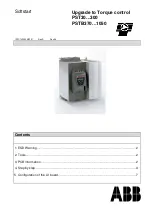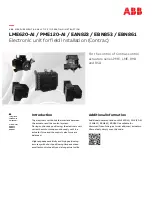Chapter 17 Flash Memory
MPC5602P Microcontroller Reference Manual, Rev. 4
Freescale Semiconductor
369
4. Deselect current operation by clearing MCR[PGM] and MCR[ERS] (or UT0[MRE] and
UT0[EIE]).
If a modify operation is on-going in one of the Flash blocks, it is forbidden to start any other modify
operation on the other Flash block.
In the following sections, all the possible modify operations are described and some examples of the
sequences needed to activate them are presented.
17.3.8.1.1
Double word program
A Flash program sequence operates on any double word within the Flash core.
One or both words within a double word may be altered in a single program operation.
Whenever the Flash is programmed, ECC bits are also programmed (unless the selected address belongs
to a sector in which the ECC has been disabled in order to allow bit manipulation). ECC is handled on a
64-bit boundary. Thus, if only one word in any given 64-bit ECC segment is programmed, the adjoining
word (in that segment) should not be programmed since ECC calculation has already completed for that
64-bit segment. Attempts to program the adjoining word will probably result in an operation failure. It is
recommended that all programming operations be of 64 bits. The programming operation should
completely fill selected ECC segments within the double word.
Programming changes the value stored in an array bit from logic 1 to logic 0 only. Programming cannot
change a stored logic 0 to a logic 1.
Addresses in locked/disabled blocks cannot be programmed.
The user may program the values in any or all of 2 words of a double word with a single program sequence.
Double word-bound words have addresses that differ only in address bit 2.
The program operation consists of the following sequence of events:
1. Change the value in the MCR[PGM] bit from 0 to 1.
2. Ensure the block that contains the address to be programmed is unlocked.
a) Write the first address to be programmed with the program data.
b) The Flash module latches address bits (22:3) at this time.
c) The Flash module latches data written as well.
d) This write is referred to as a program data interlock write. An interlock write may be as large
as 64 bits, and as small as 32 bits (depending on the CPU bus).
3. If more than 1 word is to be programmed, write the additional address in the double word with data
to be programmed. This is referred to as a program data write.
The Flash module ignores address bits (22:3) for program data writes.
The eventual unwritten data word defaults to 0xFFFF_FFFF.
4. Set MCR[EHV] to 1 to start the internal program sequence, or skip to step 9 to terminate.
5. Wait until the MCR[DONE] bit goes high.
6. Confirm MCR[PEG] = 1.
7. Write a logic 0 to the MCR[EHV] bit.


















